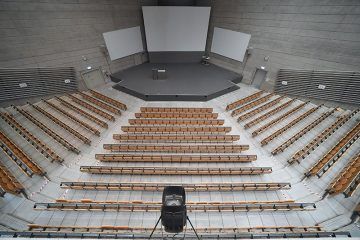Alexandra Witze in Nature:
 As universities face major changes, their financial outlook is becoming dire. Revenues are plummeting as students (particularly international ones) remain home or rethink future plans, and endowment funds implode as stock markets drop.
As universities face major changes, their financial outlook is becoming dire. Revenues are plummeting as students (particularly international ones) remain home or rethink future plans, and endowment funds implode as stock markets drop.
The universities that are likely to fare best are those that are rich and powerful. But even those face challenges. The Massachusetts Institute of Technology in Cambridge has been putting courses online for free since 2002, but most academics who were teaching in the current semester still had to scramble to work out how to move their materials online when the pandemic hit, says Sanjay Sarma, the university’s vice-president for open learning. More broadly, many institutions are learning the hard way that simply delivering course materials through digital platforms is not the best way to teach students. “Zoom university isn’t proper online learning,” he says.
Sarma hopes that when universities resume in-person classes, the experience will be radically different — with instructors distributing video lectures early, and focusing in-person time on interacting with students to ensure that they understand the concepts being taught. “We don’t want to waste our proximity on one-way stuff,” he says. “It has to be two-way learning.” Some educators expect the pandemic will lead to more and better online teaching than before — in both wealthy countries and those with lower incomes. When universities in Pakistan closed in March, many instructors didn’t have the tools to teach online and many students lacked reliable Internet access at home, says Tariq Banuri, chairman of Pakistan’s Higher Education Commission in Islamabad. But the commission has been working to standardize online teaching and to get telecommunication companies to offer students cheaper mobile-broadband packages.
More here.
